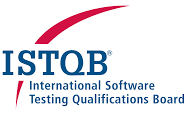21 Types of Software Testing Every Engineer Should Be Using for Better Results
21 Types of Software Testing Every Engineer Should Be Using for Better Results
Outline
- Introduction
- Brief overview of the importance of software testing
- The evolving landscape of software development
- The Basics of Software Testing
- Definition and purpose of software testing
- Different testing levels (unit testing, integration testing, system testing)
- Manual Testing Techniques
- Exploring manual testing methods
- Pros and cons of manual testing
- Automated Testing Tools
- Overview of popular automated testing tools
- Benefits of incorporating automation in testing processes
- Functional Testing
- Importance of ensuring software functions as expected
- Different types of functional testing (unit, integration, system, acceptance testing)
- Non-Functional Testing
- Evaluating non-functional aspects like performance and security
- Different types of non-functional testing (performance testing, security testing)
- Compatibility Testing
- Ensuring software compatibility with various platforms and devices
- The significance of compatibility testing
- Usability Testing
- Focusing on the user experience
- Methods for conducting usability testing
- Regression Testing
- Preventing software regression issues
- Incorporating regression testing into the development lifecycle
- Load Testing
- Stress testing software to evaluate performance under load
- Tools and techniques for load testing
- Smoke Testing
- Quick checks to identify major issues
- The role of smoke testing in the testing process
- Acceptance Testing
- Validating that the software meets user requirements
- Types of acceptance testing (alpha, beta testing)
- Alpha Testing
- In-depth exploration of alpha testing
- The benefits of involving internal users in testing
- Beta Testing
- Testing in a real-world environment
- Collecting feedback from external users
- User Interface Testing
- Ensuring the visual elements meet design specifications
- The importance of UI testing in software development
- Exploratory Testing
- An adaptive and flexible testing approach
- How exploratory testing complements other testing methods
- Boundary Testing
- Evaluating software behavior at the limits of its functionality
- Examples of boundary testing scenarios
- Model-Based Testing
- Leveraging models to create test cases
- Advantages of model-based testing
- Security Testing
- Identifying and addressing security vulnerabilities
- The role of security testing in software development
- Conclusion
- Recap of the importance of diversified testing approaches
- Encouraging engineers to explore and adopt various testing techniques
21 Types of Software Testing Every Engineer Should Be Using for Better Results
In the fast-paced world of software development, ensuring the quality of your product is paramount through software testing. The demand for robust, error-free software has given rise to various software testing methodologies.
As an engineer, understanding and implementing a diverse range of testing techniques can significantly enhance the quality and reliability of your software.
Introduction
Software testing is a crucial phase in the software development life cycle. It involves the evaluation of a software application to identify any bugs, errors, or issues that may impact its functionality.
The dynamic nature of software development requires engineers to be well-versed in a multitude of software testing methods. In this article, we will explore 21 types of software testing that every engineer should consider to achieve better results.
The Basics of Software Testing
Before delving into the specifics, let’s establish a foundation by understanding the basics of software testing. At its core, software testing aims to ensure that a piece of software functions as intended and meets user requirements.
The testing process is categorized into different levels, including unit testing, integration testing, and system testing, each serving a unique purpose in the quality assurance journey.
Manual Testing Techniques
While automated testing has gained popularity, manual testing remains a fundamental aspect of the testing landscape. Engineers should be adept at various manual testing techniques, from exploratory testing to user interface testing.
Manual testing allows for a nuanced evaluation of software, uncovering issues that automated tools might overlook. However, it’s essential to weigh the pros and cons of manual testing in the context of each project.
Automated Testing Tools
Automation is a game-changer in the realm of software testing. There are numerous automated testing tools available, streamlining the testing process and enhancing efficiency.
Engineers should familiarize themselves with popular tools, such as Selenium, JUnit, and Appium, to leverage the benefits of automated testing. Automation not only accelerates the testing phase but also facilitates continuous integration and delivery practices.
Functional Testing
Ensuring that software functions as expected is a primary goal of functional testing. This category encompasses various testing types, including unit testing, integration testing, system testing, and acceptance testing.
Engineers should embrace a comprehensive approach to functional testing, addressing both individual components and the integrated system.
Non-Functional Testing
In addition to functional aspects, non-functional aspects play a critical role in software quality. Non-functional testing focuses on parameters like performance, security, and usability.
Performance testing evaluates the system’s responsiveness under different conditions, while security testing aims to identify and rectify vulnerabilities. Usability testing ensures that the software provides a seamless and intuitive user experience.
Compatibility Testing
With the multitude of devices and platforms available, compatibility testing has become indispensable. Engineers need to verify that their software works seamlessly across various operating systems, browsers, and devices.
Compatibility testing ensures a consistent user experience, irrespective of the user’s choice of technology.
Usability Testing
User experience is a key determinant of software’s success. Usability testing involves assessing how easily users can interact with the software. Engineers should employ various usability testing methods to gain insights into user preferences and behavior.
A user-friendly interface enhances customer satisfaction and contributes to the overall success of the software.
Regression Testing
As software evolves, regression testing becomes essential. This type of testing ensures that new changes do not negatively impact existing functionalities.
By incorporating regression testing into the development lifecycle, engineers can catch and address potential issues early on, preventing regressions and maintaining software stability.
Load Testing
To evaluate a software system’s performance under stress, load testing is employed. Engineers simulate high user loads to identify potential bottlenecks and weaknesses in the system.
Load testing tools, such as Apache JMeter and LoadRunner, aid in assessing how the software handles concurrent user activity.
Smoke Testing
Smoke testing, also known as build verification testing, involves quick checks to identify major issues early in the testing phase. This preliminary assessment helps engineers decide whether to proceed with more in-depth testing.
Smoke testing is a valuable practice for ensuring that the software build is stable and ready for further evaluation.
Acceptance Testing
Ensuring that the software meets user requirements is the goal of acceptance testing. This phase involves validating the software against predefined criteria.
Alpha and beta testing are two common types of acceptance testing, with alpha testing conducted internally and beta testing involving external users.
Alpha Testing
Alpha testing is an in-depth exploration of the software by internal users before its official release. This phase allows developers to gather valuable feedback and address any issues identified by the internal team.
Beta Testing
Once the software has undergone alpha testing, it enters the beta testing phase. Beta testing involves releasing the software to a select group of external users who operate in a real-world environment.
This testing phase aims to collect feedback from end-users, uncovering any potential issues that might have been overlooked during the development and alpha testing stages.
User Interface Testing
A visually appealing and intuitive user interface is crucial for the success of any software. User interface testing ensures that the visual elements align with the design specifications.
Engineers should pay attention to the layout, navigation, and overall aesthetics of the software to guarantee a positive user experience.
Exploratory Testing
In the ever-evolving landscape of software development, exploratory testing plays a vital role. This adaptive and flexible testing approach involves simultaneous learning, test design, and test execution.
It complements other testing methods by allowing engineers to quickly adapt to changing requirements and identify potential issues on the fly.
Boundary Testing
Software behavior at the limits of its functionality is thoroughly evaluated through boundary testing. By exploring the extremes of input ranges, engineers can identify potential vulnerabilities and weaknesses.
Examples of boundary testing scenarios include testing the minimum and maximum values of numeric input fields to ensure the software’s stability.
Model-Based Testing
Model-based testing leverages models to create test cases, providing a systematic approach to testing. This method helps engineers generate comprehensive test scenarios based on the system’s specifications.
The advantages of model-based testing include increased test coverage and the ability to identify potential defects early in the development process.
Security Testing
In an era where cyber threats are prevalent, security testing is paramount. This testing type aims to identify and address vulnerabilities within the software.
Engineers should employ various security testing techniques, such as penetration testing and code review, to ensure that the software is resilient against potential security breaches.
Conclusion
In conclusion, incorporating a diverse range of software testing methods is essential for every engineer striving for better results. The dynamic nature of software development demands adaptability and a proactive approach to quality assurance.
By embracing manual and automated testing, functional and non-functional testing, and various specialized testing methods, engineers can ensure that their software meets the highest standards of quality.
Remember, the key to success lies in a well-rounded testing strategy that addresses both the functional and non-functional aspects of software.
Continuously exploring and adopting new testing techniques will undoubtedly contribute to the overall success of your software projects.
Frequently Asked Questions (FAQs)
- Q: Why is software testing crucial in the development process?
- A: Software testing ensures the identification and rectification of bugs, enhancing the overall quality and reliability of the software.
- Q: How does automated testing benefit engineers?
- A: Automated testing accelerates the testing process, facilitates continuous integration, and improves overall efficiency.
- Q: What is the significance of compatibility testing?
- A: Compatibility testing ensures that software works seamlessly across various platforms, browsers, and devices, providing a consistent user experience.
- Q: Why is user interface testing essential?
- A: User interface testing ensures that the visual elements of the software align with design specifications, contributing to a positive user experience.
- Q: How can engineers stay updated on new testing techniques and tools?
- A: Engineers can stay updated through continuous learning, attending conferences, and participating in online communities dedicated to software testing.











